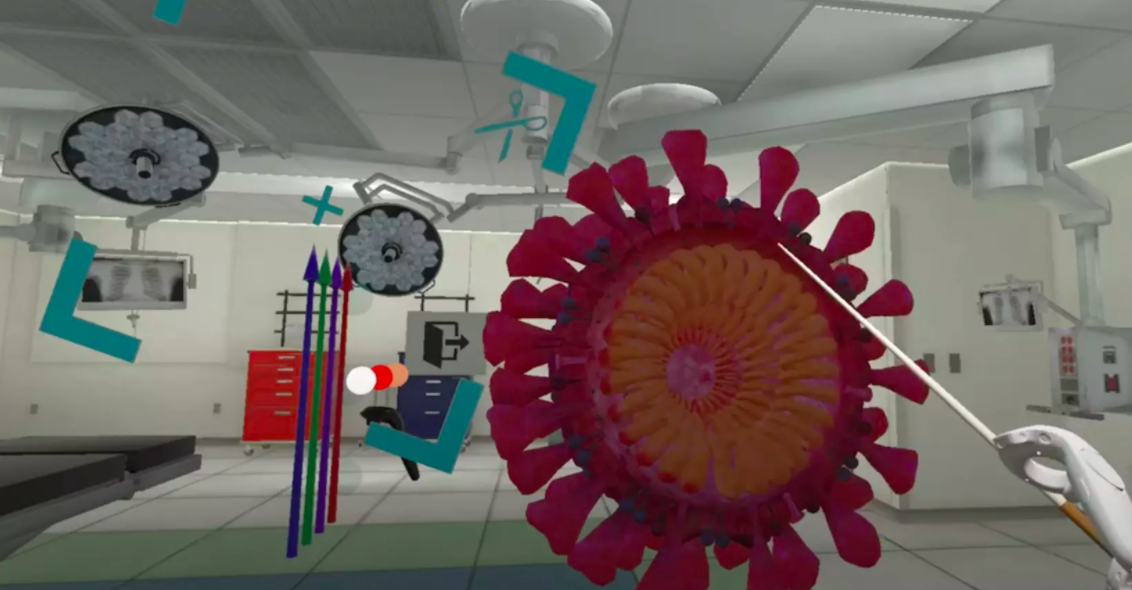VR Training for Healthcare Workers on the Front Line and in the Classroom
In this critical time, virtual simulations offer the next best thing to real patients, helping medical professionals and students sharpen their skills and learn new ones.

By Stephanie Walden
In Washington state, doctors who typically deal with elective surgeries turned to virtual reality (VR) to relearn emergency-response skills they haven’t practiced since medical school. In New York City, homebound nursing students watched online simulations to learn how to properly don personal protective equipment (PPE).
All around the country, both budding and established healthcare professionals pivoted their studies and skills due to COVID-19 — and often, without physically setting foot in traditional classrooms or hospitals.
Cole Sandau, CEO of the VR medical training platform Health Scholars, says his company fielded near-constant requests from health workers seeking educational resources. “Our chief medical officer got a phone call from a colleague who is a rheumatologist,” Sandau recalls. “He said, ‘I haven’t been in a hospital since I finished my residency 25 years ago, and in a few weeks I have to be in an ICU.’”
To help healthcare professionals adapt to this surreal situation and the effects it will have on healthcare going forward, organizations are turning to new and innovative training environments fueled by VR. From training doctors for unfamiliar fieldwork to helping nursing students continue their studies, here are four ways in which companies are helping the medical community learn and train during the crisis and beyond.
Supporting surge providers
The World Health Organization estimates there’s currently a global shortage of 6 million nurses. Many cities also experienced a shortage of physicians who can treat COVID-19 patients because of varying skill sets and the spread of the infection among healthcare workers themselves. Specialists in other areas and even retired physicians were called in to fill the gap.
VR offers a relatively low-risk environment where healthcare professionals can learn or relearn critical skills. “In the six months leading up to the crisis, we were already seeing increased interest in VR to deliver patient information and for surgical planning,” says Mary Kate Mahoney, HP’s global lead for virtual reality in healthcare. “Now, we’re hearing ‘We need to educate in a new way.’”
Mahoney says that to help meet the needs on the ground, HP works with partners to develop complete training solutions that work on a variety of platforms, getting crucial education where it’s needed most.
“Even for people who work in the ER, now there’s a need to reorient how they perceive what’s going on around them and how they deliver care,” Mahoney says. “COVID-19 is just not the same as what anyone is used to seeing.”
VR is an apt mechanism for practicing the complex and life-saving skills that are in high demand right now. In response to the current crisis, Health Scholars developed a program that helps providers train for advanced cardiac life support (ACLS) scenarios — when patients go into cardiac arrest, which is often associated with severe COVID-19 infections.
“It’s so immersive, it really creates the entirety of the environment,” says Sandau, who says that Health Scholars has invested heavily in natural language processing (NLP). “Not only do we use VR to process visuals and sound, but with NLP, we also virtualize speech. You’re not using hand controllers; you’re actually telling people what to do — and they do it.”
To get training materials into the hands of providers as quickly as possible, Health Scholars has made its programming accessible on desktop PCs. Users get basically the same technical experience as they would in VR, but they can access the materials from home, without any special equipment. They can complete exercises as many times as they need to feel comfortable and proficient.
One system Health Scholars works with on the East Coast has activated every clinical provider they have into emergency roles. “They’ve written to us to say they would have had no idea how to do [these trainings] without our software,” says Sandau.

